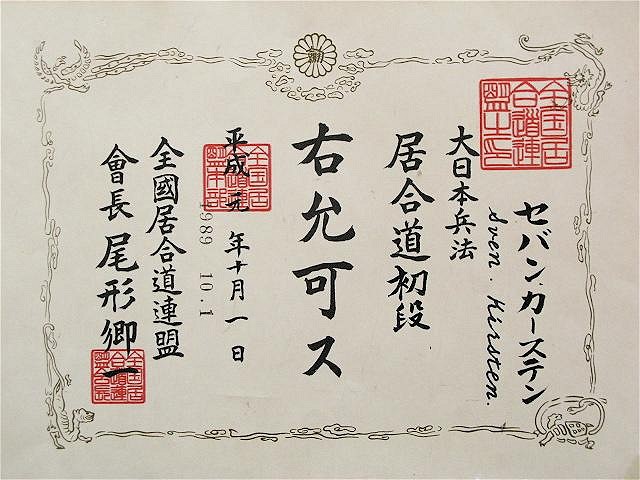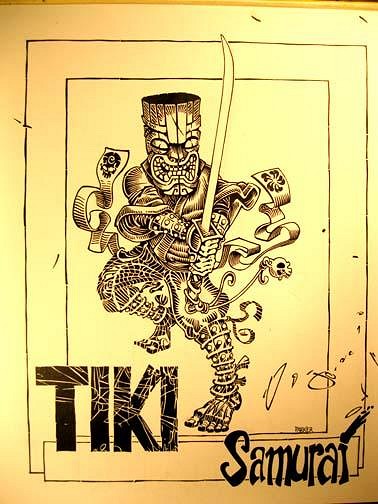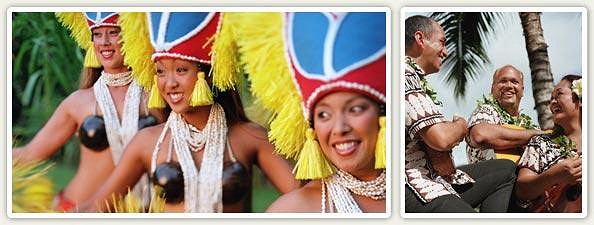Tiki Central / General Tiki
Real vs. Fake Hawaiian
Pages: 1 22 replies
|
L
LoungeShark
Posted
posted
on
Mon, Sep 10, 2012 5:37 AM
Didn't see this article get posted yet. Kinda interesting. Any fact to it? http://news.yahoo.com/hawaii-tourism-goes-authentic-whats-not-hawaiian-130704760.html |
|
K
Kaiwaza
Posted
posted
on
Mon, Sep 10, 2012 12:30 PM
I saw this article when it first came out & so far as I'm aware it's all factual. But I think it's akin to saying anything associate with Disney World isn't truly Floridian. What exactly would be truly Floridian other than something from the Seminoles or aboriginal peoples? And even THEY came from somewhere else at some point. Same with Hawaii to me. |
|
AS
Aquatic Safarinaut
Posted
posted
on
Mon, Sep 10, 2012 1:20 PM
"if it’s not fake-real, it’s not really tiki" |
|
B
bigbrotiki
Posted
posted
on
Mon, Sep 10, 2012 11:35 PM
And then there is this article: http://weather.aol.com/2012/09/07/hawaii-turns-its-back-on-the-coconut-bra#page=1 I am glad that ancestral Hawaiians are striving for authenticity, and clarifying what's not, so that hopefully more and more people will understand that Tiki style is NOT meant to be authentic ancient or current Polynesia, yet has value as an art form in its own right. Native Hawaiians try to preserve the culture of their ancestors, and we are trying to preserve a part of the culture of our ancestors. If anybody here on TC and in the Tiki Revival would believe that our genre represents authentic Hawaii and Polynesia, I would pity him or her. Our grandparents and parents might have in the 50s and 60s, but because they loved the culture - and so they were inspired by it to create some pretty amazing things. And that's where it gets difficult to differentiate: We love authentic Polynesian culture and art too, and gladly ad it to our home hideaway - but that only makes it a more authentic Tiki bar, not a real native hut. While I respect that true Polynesians need to define themselves through their culture, I see Western attempts at authenticity more philosophical: The wish and search for authenticity is an age-old one, the human desire to recreate a lost culture in the most authentic manner is a continuous conundrum: No matter how close we get, it is not "it". The question of "What is Hawaiian - What is Polynesian?" lies at the heart of the fascination that mid-century America felt for these cultures: The writings of Thor Heyerdahl and James Michener popularized the anthropological research that described the migrations (and stemming from a common source), and later mingling of the individual cultures through inter-island outrigger travel before the white man even arrived. Much of this is not common knowledge anymore, but back in the mid-century it was part of the whole "edu-tainment" experience of the Tiki bar. |
|
GK
Grand Kahu
Posted
posted
on
Tue, Sep 11, 2012 1:49 PM
Indeed, poly-pop/tiki culture is simply another in a long list of Western-fantasies-meet-Asian culture, a phenomenon which dates back to ancient times but in more recent history reached one big crescendo in the later 19th century with what I like to term "eclecticism gone wild" or, to our point, the ultimate notion of exoticism. After all, bamboo furniture, palm trees, and a host of Asian and tropical motifs were not only a fashion in late 18th century England (and to a lesser, further filtered degree, North America), but in the 1870s following the opening of Japan to the West. Certainly it's an important predecessor to the poly-pop-to-tiki timeline BigBro has created. If one reads about what was considered "authentic" Japanese art in the 1870s-90s and some of the critics debating over the debasement of the "pure" (a nonsensical issue, as culture and art are always in flux) Japanese forms with tourist art or "worse," that made by Westerners to merely give the sense of the exotic far east. But just as people in the 50s and 60s ate up tiki culture as East-meets-West fantasy, so too did thousands of others, who during the late 19th century bought up anything in the Japanese taste, regardless of where and under what circumstances it was made. Smoking jacket kimono to Hawaiian shirt -- just change up the motifs and the century and there you go! GK |
|
PR
Phillip Roberts
Posted
posted
on
Tue, Sep 11, 2012 11:51 PM
[email protected] You know I am angry at sloppy journalism... Waikiki Tiki; Art, History, and Photographs. [ Edited by: Phillip Roberts 2012-09-11 23:53 ] |
|
B
bigbrotiki
Posted
posted
on
Wed, Sep 12, 2012 10:53 AM
Grand Kahu, good point. The Japanese fad in Europe is one example (I was not aware of the critics noting its in-authenticity! :) ), and it seems the desire to take on "exotic" stylings from other countries began as soon as mankind became aware of "style": The ancient Greeks found Egyptian fashions and decor intriguing and copied them, for example. |
|
GK
Grand Kahu
Posted
posted
on
Thu, Sep 13, 2012 10:15 PM
Right -- and the Romans did the same -- as did Europe in the Renaissance when it became a mish-mosh of Greco-Roman-Egypto design known simply as "the antique" regardless of authenticity or the origin of motifs. I do think the Japonesque craze of the late 19th century seems a strong candidate as poly-pop-predecessor, given the motifs and approach were not too far off. However, I think the craze for Japanese design ("authentic" or not) was probably even more widespread and rabid. After all, it went far beyond bar and restaurant designs, backyard luaus and the like to permeate household furnishings, a wide range of fashion, fine art (e.g. Impressionism), etc. I do wonder...was there a fashion for sake and the cuisine? Aside from the novelty of chopsticks and the much-later introduction of Japanese cuisine to Western restaurants, it would be interesting to see if there were many parties in the Japanese taste which actually involved some Western twists on Japanese drink and food. Bamboo mugs and sake cocktails in the 1880s? Hmm... GK |
|
B
bigbrotiki
Posted
posted
on
Fri, Sep 14, 2012 2:06 AM
Well, I know one thing, the fondness for things Japanese predated Polynesian pop in my own personal history :) I loved both, contemporary Japanese pop culture, and especially classic Japanese style and esthetics. I have a whole bookshelf full of tomes on Japanese customs. It was just such a refined culture but a completely different universe. As a cinematographer, I adored B&W Cinemascope Samurai movies, and practiced Iaido (Japanese sword) for several years.
|
|
A

AceExplorer
Posted
posted
on
Fri, Sep 14, 2012 4:24 AM
Sven, you didn't post a photo of you with Japanese sword? :) |
|
J
JOHN-O
Posted
posted
on
Fri, Sep 14, 2012 9:15 AM
I'm surprised the Bigbro didn't respond with this. :D Maybe he forgot? I didn't. :) There are some of his posts that stick in my memory. |
|
A

AceExplorer
Posted
posted
on
Fri, Sep 14, 2012 9:36 AM
Very nice, thanks for posting that link, John. It's a great combination of photos and backstory. Those officers were probably looking for an opportunity to get out and stretch their legs a bit and Sven gave them exactly that opportunity. Truly a memorable post! I find it interesting to note that a man with a cocktail shaker in-hand on the beach could have gotten the same response from those officers. |
|
J
JOHN-O
Posted
posted
on
Fri, Sep 14, 2012 9:47 AM
Pay attention !! It's going to be the 2014 Tiki Oasis theme...
|
|
HP
Hemp Paper
Posted
posted
on
Sat, Sep 15, 2012 8:40 PM
I'm pretty lucky to get to work with such a wide variety of traditional styled Tikis. Especially now that I realize how rare something like this actually is. |
|
B
bigbrotiki
Posted
posted
on
Sun, Sep 16, 2012 2:41 AM
Your Hawaiian Tikis are a good example for the "Fake" or "Real" Hawaiian question. To me, they are not merely fake, because they capture the spirit of the tradition and draw from it, but they are obviously not "real' in the sense of the real ancient ki'i in the museums. They are modern interpretations of the art form, going beyond exact copies of the historic originals. |
|
GK
Grand Kahu
Posted
posted
on
Sun, Sep 16, 2012 11:59 AM
In the museum field, "fake" (aka forgery) is generally reserved for describing a work created with the intention to deceive by providing the appearance of something else, typically an older work, one by a known artist, or from a particular culture other than the one which made it. As long as the intention is not to deceive, then it becomes as Big Bro suggests -- that is, a work innocently inspired by or in other nomenclature, "in the style of." So, we can have a wanna-be Barney West carving which a carver tries to pass off as such and have a fake of a work in the style of a New Guinea "original" (or source). Whew. This begat that, and this begat another! I really should have a cocktail before thinking about hair-splitting... GK Grand Kahu Tied by my Mai Tai... [ Edited by: Grand Kahu 2012-09-16 12:00 ] |
|
B
bigtikidude
Posted
posted
on
Mon, Sep 17, 2012 1:55 PM
cool, Jeff(btd) |
|
HW
Holler Waller
Posted
posted
on
Mon, Sep 17, 2012 6:24 PM
Bob's thoughts regarding music, could be wrong but it mostly seems to fit here too:
|
|
T
tikilongbeach
Posted
posted
on
Tue, Sep 18, 2012 7:01 PM
A friend of mine in Oklahoma sent me a link to a news cast that was shown locally about "Nix the tiki bar: Hawaii tourism gets authentic". http://www.news9.com/story/19480552/nix-the-tiki-bar-hawaii-tourism-gets-authentic |
|
HP
Hemp Paper
Posted
posted
on
Thu, Sep 20, 2012 12:23 AM
Which is why I'm extremely lucky to work so closely with this collection of carvings and carvers. Pretty sure our Cisco collection is as traditional as possible. I'll write background information on Cisco soon, but he's an 80 year old Hawaiian who's been carving his entire life, and does everything by hand with a chisel. He's a true artist. |
|
C
christiki295
Posted
posted
on
Wed, Oct 3, 2012 12:48 PM
The article acknowledges the irony in that even though grass skirts and coconut bras may not be indigenous to Hawaii, they certainly are now ingrained in its culture. For example, Smith's Luau on Kaua'i, emphasizes coconut-bra clad dancers in its show and in its advertising: |
|
HT
Hale Tiki
Posted
posted
on
Thu, Oct 4, 2012 7:23 AM
I love this thread. Thank you all for your contributions to my entertainment and enlightenment. |
|
A

AceExplorer
Posted
posted
on
Thu, Oct 4, 2012 7:32 AM
It's interesting that it's not clear when this blessing was first bestowed on coconut shells in Hawai`i. Obviously a requirement to avoid offending sensibilities of the time. I think the natives had it right all along though. |
Pages: 1 22 replies




